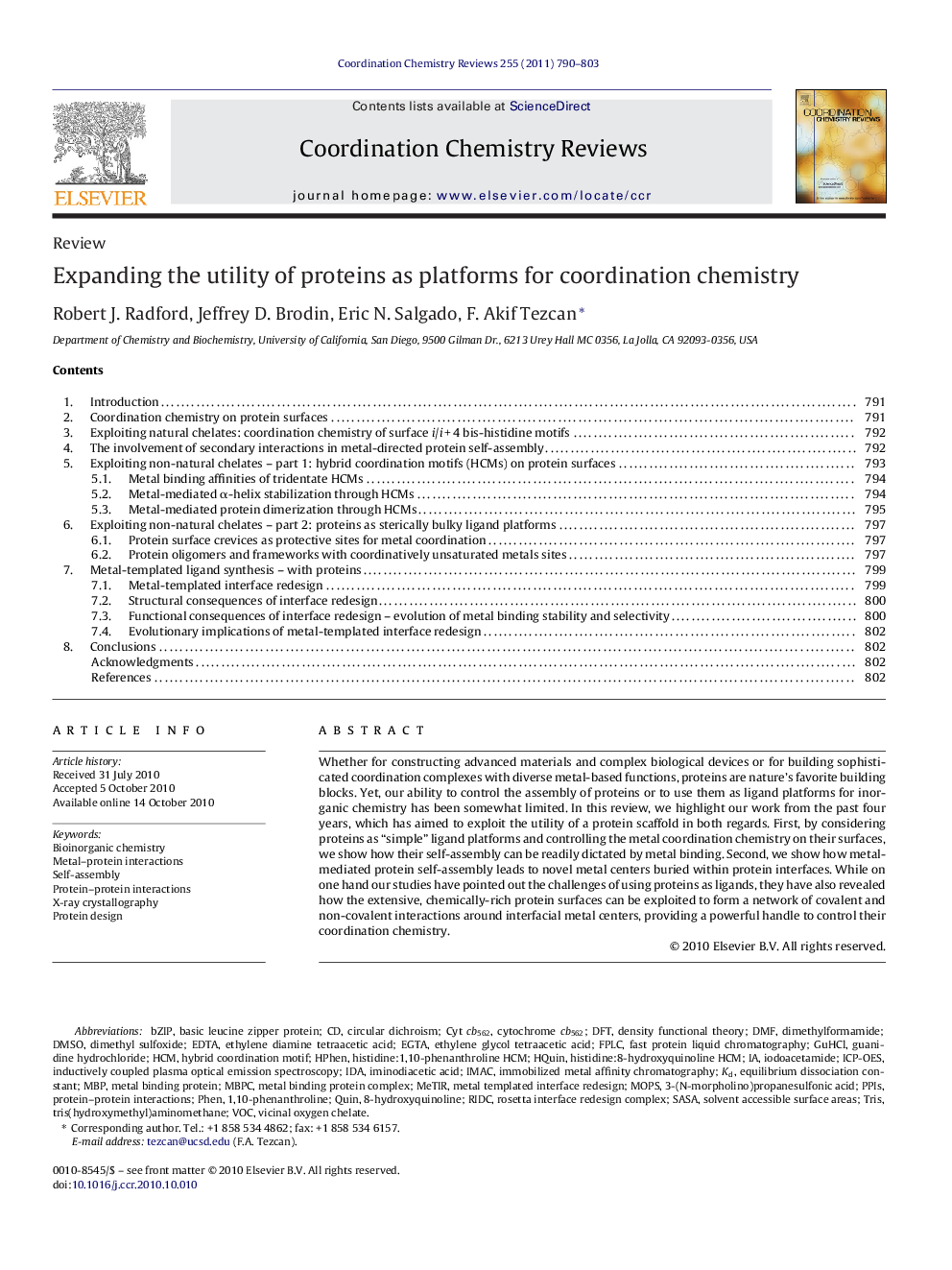| Article ID | Journal | Published Year | Pages | File Type |
|---|---|---|---|---|
| 1299253 | Coordination Chemistry Reviews | 2011 | 14 Pages |
Whether for constructing advanced materials and complex biological devices or for building sophisticated coordination complexes with diverse metal-based functions, proteins are nature's favorite building blocks. Yet, our ability to control the assembly of proteins or to use them as ligand platforms for inorganic chemistry has been somewhat limited. In this review, we highlight our work from the past four years, which has aimed to exploit the utility of a protein scaffold in both regards. First, by considering proteins as “simple” ligand platforms and controlling the metal coordination chemistry on their surfaces, we show how their self-assembly can be readily dictated by metal binding. Second, we show how metal-mediated protein self-assembly leads to novel metal centers buried within protein interfaces. While on one hand our studies have pointed out the challenges of using proteins as ligands, they have also revealed how the extensive, chemically-rich protein surfaces can be exploited to form a network of covalent and non-covalent interactions around interfacial metal centers, providing a powerful handle to control their coordination chemistry.
Research highlights▶ Chelating groups on protein surfaces direct metal-mediated protein self-assembly. ▶ The geometry of metal-directed protein superstructures is largely dictated by metal stereochemistry. ▶ Tridentate hybrid coordination motifs improve control of metal binding on protein surfaces. ▶ Secondary interactions provide a powerful handle to control interfacial coordination chemistry. ▶ Metal-templated design of protein interfaces may have evolutionary implications on protein structure and function.
